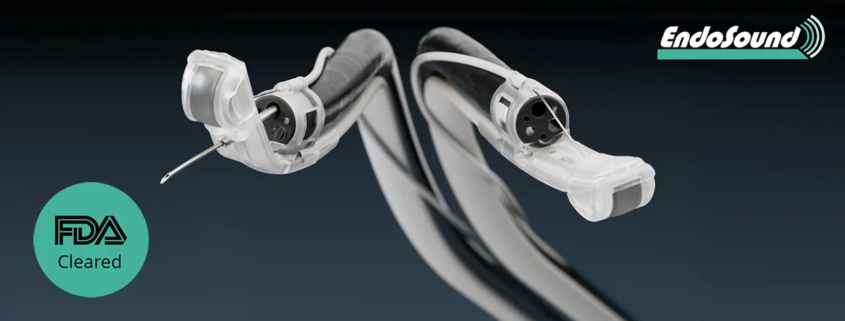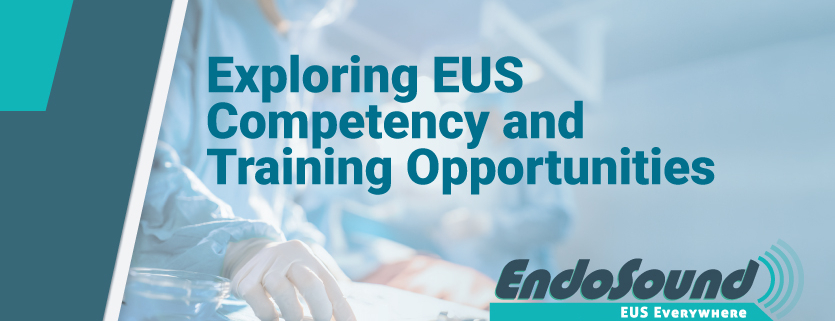- 510(k) Clearance of first-of-kind Endoscopic Ultrasound (EUS) technology
- Paves the way for safer and more accessible medical care
- EndoSound will begin its controlled market release early in Q1 2024
Portland, Jan. 2, 2024—EndoSound® Inc., a pioneering medical technology company dedicated to advancing patient care, is pleased to announce it has received 510(k) clearance from the FDA for its EndoSound Vision SystemTM (EVSTM). This milestone achievement follows the company’s FDA Breakthrough Device designation in July 2021, emphasizing the technology’s safety features and its potential to enhance access to patient care.
The EVS is a novel endoscopic ultrasound (EUS) device that attaches to upper gastrointestinal endoscopes. It easily integrates into any endoscopy center’s existing ecosystem. The EVS is poised to revolutionize the landscape of EUS. With a more economical offering, the EVS can provide greater access to this critical imaging and therapeutic procedure than conventional EUS equipment. EndoSound expects the EVS will shift the site of care to more efficient settings like the ambulatory surgery center (ASC) preferred by patients, providers, and payers.
“We are thrilled to receive 510(k) clearance for our EVS, a testament to the dedication and innovation of the entire EndoSound team. This milestone underscores our commitment to advancing medical technology and improving patient outcomes. With the EVS, we aim to not only enhance the safety of endoscopic procedures but also contribute to expanding access to care for patients worldwide,” said Dr. Stephen Steinberg, President and CEO at EndoSound.
Breakthrough Technology
The FDA’s Breakthrough Device designation recognized the EVS for its groundbreaking approach to patient safety, cost reduction, and ability to increase accessibility to critical medical care. The EVS represents a significant leap forward in medical technology, specifically addressing the critical issue of infections associated with difficult-to-clean endoscope elevators. This clearance validates the system’s effectiveness and safety, underscoring EndoSound’s commitment to advancing healthcare through innovation.
Endoscopic Ultrasound Procedure
Endoscopic Ultrasound (EUS) is a minimally invasive procedure performed to assess diseases of the GI tract and other nearby organs and tissues. High-frequency sound waves produce detailed images of the pancreas, liver, and gallbladder. Currently, over 95% of patients who undergo EUS are seen in a hospital setting. A majority of those patients could be seen in a more efficient setting where patients prefer to be treated, an ASC.
About EndoSound
EndoSound, Inc., is a privately held company based in Portland, Oregon. EndoSound is dedicated to expanding access to endoscopic ultrasound technology around the world. With its patented design, EndoSound transforms any flexible upper endoscope into a fully functional EUS scope. It is comprised of an experienced team of scientists and engineers, clinicians, and seasoned business professionals with a track record of bringing new medical devices to market.
To learn more about the EVS, please visit endosound.com.
For media inquiries, please contact:
Patrick Hurley
VP of Marketing
pr@endosound.com









